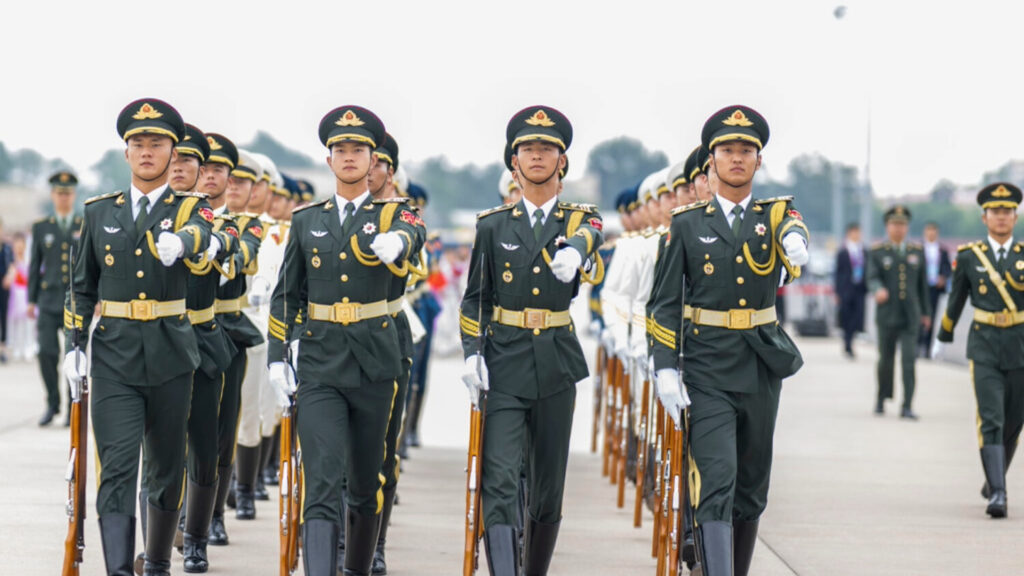The US-Philippines Military Alliance & The Escalating Taiwan Strait Tensions
Geopolitical tensions around the Indo-Pacific are escalating with new advancements in the US-Philippines Military Alliance and the escalating tensions around the Taiwan Strait. The origins of a defense relationship between the US and the Philippines dates back to 1947 when US Ambassador to the Philippines Paul McNutt and Philippino President Manuel Roxas signed a Military Based Agreement granting the US the right to establish military bases in more than a dozen locations. Then, under the 1951 Mutual Defense Treaty, the US and the Philippines emphasized a “mutual commitment to peacefully resolve international disputes, separately or jointly developing capacity to resist attacks”; US bases remained in operation on the island until 1992. However, a rise of anti-US sentiment in the early 1990s led the Philippine Senate to vote down a treaty to renew the lease for US facilities. It was not until the 1998 Visiting Forces Agreement that the US and Philippine forces renewed joint participation in annual “shoulder-to-shoulder” exercises known as Balikatan, which Australian military personnel also joined in 2014. In that same year, Washington and Manila signed an Enhanced Defense Cooperation Agreement (EDCA), a 10-year deal that strengthened the US military presence in the Philippines with increased rotations of US military personnel.
This alliance has been especially important in the backdrop of Chinese military activities in the region. China claims around 90% of the South China Sea through the “Nine-Dash Line,” which overlaps with the Exclusive Economic Zone (EEZ) of other countries like the Philippines, Vietnam, Malaysia, and Brunei. In 2016, the Permanent Court of Arbitration in the Hague struck down China’s claims as having no legal basis. However, China virtually ignored the ruling, keeping its military bases on artificial islands, deploying naval forces, and US Coast Guard ships to bully other countries out of the region through A2/AD strategies. On top of this, China claims Taiwan as part of its territory, claiming sovereignty over the Taiwan Strait and the international waterway as “internal waters”. What this means more globally is that China’s claims and military behavior are raising tensions with nearby countries and the US. According to US Defense Secretary Pete Hegseth, “Deterrence is necessary around the world, but specifically in this region, in your country, considering the threat from the […] Chinese”. Chinese foreign ministry spokesperson Guo Jiakun responded that, “it is the US side that has repeatedly fabricated false propositions about China’s threat to freedom, like the South China Sea”.
Militarizing the Indo-Pacific Against Chinese Expansionism
Current tensions arising in the Indo-Pacific region are a result of militarization in the US-Philippine alliance and deterrence campaigns to threaten and discourage China’s military campaigns. On April 22, 2025, the US Congress openly supported the deployment of the Army’s Typhoon Mid-Range Capability (MRC) missile system, which China has strongly disapproved of. As a part of the US Army’s Long Range Precision Fires (LRPF) portfolio, the missile system bridges the gap between shorter-range precision missiles and the Army’s Long-Range Hypersonic Weapons, reaching targets anywhere between 500 to 2,500km. Initially, the Typhoon’s deployment in Northern Luzon during US-Philippine military exercises in 2024 was framed as temporary for training exercises. However, its continued presence in the region, amid escalating maritime tensions with China in the South China Sea, has provided its more enduring strategic intent. This comes in direct response to challenges in Filipino sovereignty and freedom of navigation operations operated by the US and its allies. Washington’s confirmation that it does not have any immediate plans to withdraw the system from the Philippines has been met with condemnation from both China and Russia, who accused the US of “escalating tensions and fuelling an arms race in the Indo-Pacific”.
Similarly, on April 27, 2025, the US military deployed the NEMESIS—a long-range missile designed to defend surface ships and land targets—on Batan Island near Taiwan during the 2025 Balikatan Exercises. According to US Martine Lt. Gen. Michael Cederholm, “the introduction of NEMESIS into the first island chain for sea denial/seal control, is another step in our force design journey”. In the following days, a mock battle simulating real-life war was launched with about 9,000 American and 5,000 Filipino military personnel taking part in it. The two powers separately launched a missile and artillery fire to shoot down several drones acting hostile to airspace in the Zambales province near the South China Sea. On top of this, during the combat exercises that took place between April 21 and May 9, American and Filipino forces anticipated and kept out hostile forces in the Western Filipino province of Palawan, which faces the South China Sea. According to Philippine Brigade Gen. Michael Logica, these mock combat exercises are crucial in “strengthening deterrence against aggression in the Bashi Channel”. To this, Lt. Cederholm added, “We are not here practicing a war plan. We are practicing the defense of the Philippines”. China has opposed these combat drills and continues to express its strong opposition to the US Army deployment of mid-range missiles in the Philippines. Even then, Washington continues to prove its commitment to defending the Philippines, with Cederhold reaffirming that, “we take our treaty obligations very seriously”.
So, in this geopolitical context, the deployment of the Typhoon and NEMESIS is not just military manoeuvres but calculated political signs. On one hand, they reinforce the US’ commitment to its Indo-Pacific allies by promoting peace and security in the region, and serve to counterbalance and contain Chinese expansionism. According to the Filipino Defense Secretary, “such deployments are essential to safeguard the country’s territorial integrity and support the broader regional security architecture”. In the face of this, Defense Secretary Pete Hegseth has reaffirmed Washington’s “ironclad” commitment to a defence treaty with the Philippines and strengthened deterrences against threats, including “Chinese aggression”.
To achieve this, regional alliances have increased their cooperation and improved their joint military exercises. Baltikan 2025 is expected to be one of the largest and most intense versions of this year’s 40th iteration. Not only will Japan’s participation be newly featured, but allied and parent forces are also set to conduct a “full battle test” covering a range of scenarios. Having largely played the role of a mere observer in Balikatan since 2012, Japan plans to use this new role to “improve the SDF’s integration operation capabilities” and use the drills to strengthen its cooperation with member states to “contribute to the creation of a favorable security environment”. Washington, Tokyo, and Canberra have all attested to deepening their defense security ties with Manila as well as their collective capacity to deter and potentially counter China’s aggression. To this, Secretary Teodoro has voiced, “We will work very closely not only with our treaty ally [the US] but also with other like-minded partners in reestablishing deterrence. This will mean increased inter-operation activities, joint exercises, and realistic training in a myriad of scenarios”.
China’s Countermoves in the Taiwan Strait
China’s response has been very direct. The Chinese defense ministry warned that “those who play first will inevitably get burned” as it concluded its 2-day-long drills around Taiwan. Put simply, in response to strengthened US-Philippine cooperation and broader regional alliances, China has launched a series of large-scale military exercises near Taiwan. These drills serve not only as a direct signal of Beijing’s strategic displeasure but also as a display of force intended to deter perceived encirclement by US allies. Codenamed Strait Thunder 2025A, the Chinese People’s Liberation Army (PLA) conducted live-fire drills in the middle and southern areas of the Taiwan Strait as part of military exercises around Taiwan as a “stern warning against seperatism”. In doing so, China aimed to test its troops’ capabilities of “joint blockade and control” and “precision on key targets”.
The timing and intensity of these drills are no coincidence, but instead act as a direct reaction to the deployment of advanced US missile systems and growing multilateral exercises such as Balkikatan. By doing so, China is actively attempting to reassert its strategic dominance in the Taiwan Strait, as its “joint blockade and control” campaigns reflect not just rehearsals. At the diplomatic level, Beijing continues to frame its actions within the language of sovereignty and anti-separatism. As Defense Minister Guo Kiakun stated, “certain countries, if they genuinely wish to see peace and stability in the Taiwan Straits, must strictly adhere to the one-China principles and stop sending the wrong signals to ‘Taiwan independence’ separatist forces”. Yet, this framing conceals China’s broader ambitions: not only to prevent Taiwanese independence but to push back against any challenge to its regional hegemony.
To this, Taiwan’s Defense Ministry’s reaction is that “Beijing’s reckless provocation of regional tensions, using global security and prosperity as bargaining chips, reveals its hegemonic mindset – one that treats lives as expendable & dimisses international rules altogether”. Within 24 hours of the drills, the islands’ defense ministry had detected 76 Chinese warplanes, 13PLA vessels, and four Chinese coast guard ships near Taiwan. For people in the streets of Tapei, “these drills happen so frequently, they’re now like a daily routine”. These developments illustrate the deepening militarization of diplomacy in the Indo-Pacific. China’s drills are not only reactive, but they are also performative acts of power. But in reality, this behavior may backfire. Rather than deterring adversaries, China’s coercion is accelerating alignment among Indo-Pacific players, giving urgency to defense cooperation and deterrence strategies.
Works Cited
Albert, Eleanor. “The U.S.-Philippines Defense Alliance.” Council on Foreign Relations, 21 Oct. 2016, https://www.cfr.org/backgrounder/us-philippines-defense-alliance.
“Breaking News: New U.S. Typhon Missiles Deployed Against China Threats in Philippines Could Expand to Other Regions.” Army Recognition, 30 Apr. 2025,
https://www.armyrecognition.com/news/army-news/2025/breaking-news-new-u-s-typhon-missiles-de ployed-against-china-threats-in-philippines-could-expand-to-other-regions.
“China Concludes Military Drills, Warns Taiwan Against ‘Provocations’.” TRT Global, 2 Apr. 2025, https://trt.global/world/article/e1e837ab179e
“China Launches Military Drills Around Taiwan, Calls Taiwan President ‘Dangerous’.” Reuters, 31 Mar. 2025,
https://www.reuters.com/world/asia-pacific/chinese-military-says-it-is-conducting-exercises-around-ta iwan-2025-03-31/.
Frias, Lauren. “US Marines Deploy Anti-Ship Missiles on Islands Near Taiwan: Photos.” Business Insider, 4 May 2025,
https://www.businessinsider.com/marines-nmesis-strike-missiles-philippines-taiwan-photos-2025-4.
Gan, Nectar, and Eric Cheung. “China’s Military Launches Live-Fire Exercise in Escalation of Blockade Drills near Taiwan.” CNN, 1 Apr. 2025,
https://edition.cnn.com/2025/04/01/china/china-taiwan-drills-live-fire-escalation-intl-hnk/index.html
Hegseth, Pete. “Hegseth Reaffirms Ironclad US Commitment to Philippines.” Reuters, 28 Mar. 2025, https://www.reuters.com/world/us-defense-secretary-reaffirms-ironclad-commitment-philippines-2025 -03-28/.
“Strengthening the U.S.–Philippine Alliance.” The Heritage Foundation, 2024, https://www.heritage.org/defense/report/strengthening-the-us-philippine-alliance.
“US Forces Deploy Anti-Ship Missiles in Philippines and Stage Live Fire Drills Near China Hotspots.” Military.com, 27 Apr. 2025,
https://www.military.com/daily-news/2025/04/27/us-forces-deploy-anti-ship-missiles-philippines-and stage-live-fire-drills-near-china-hotspots.html.



